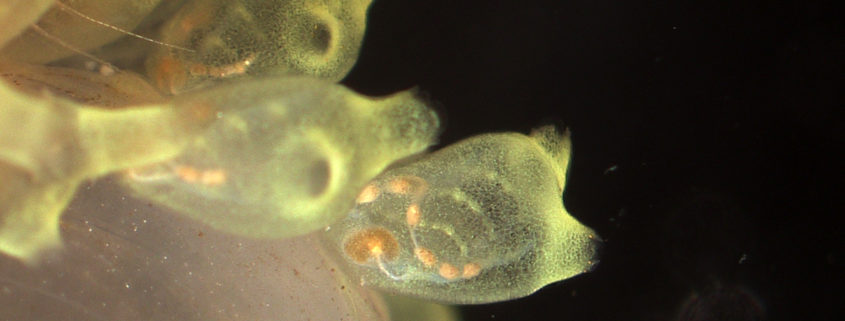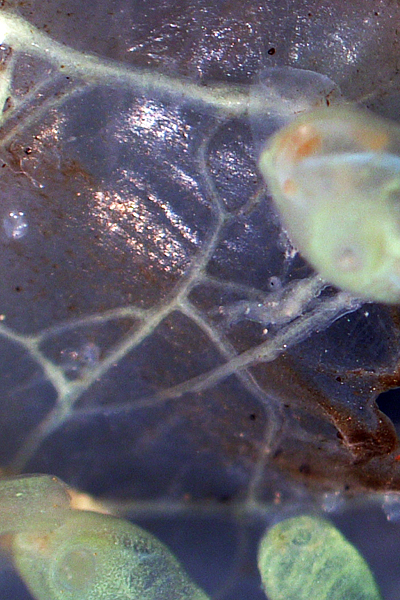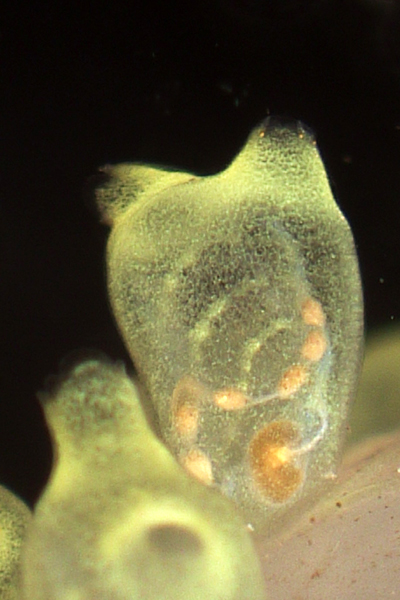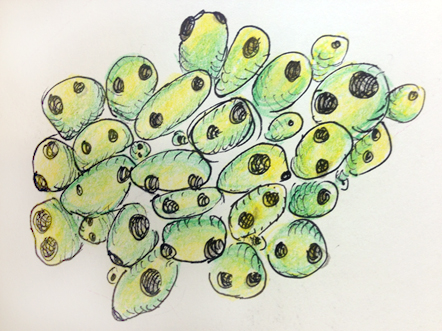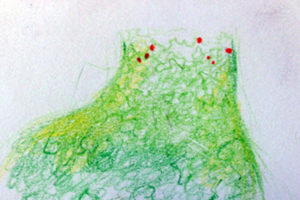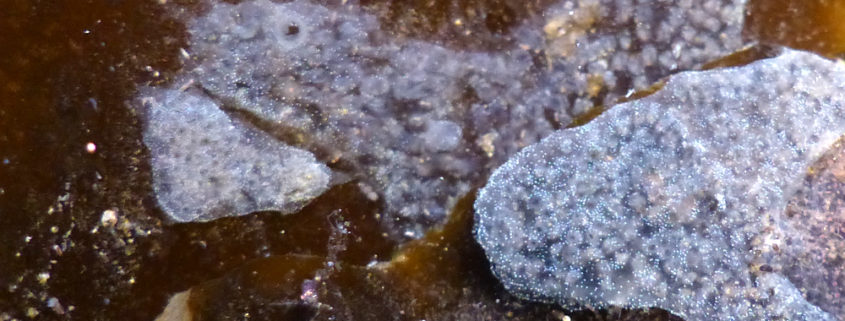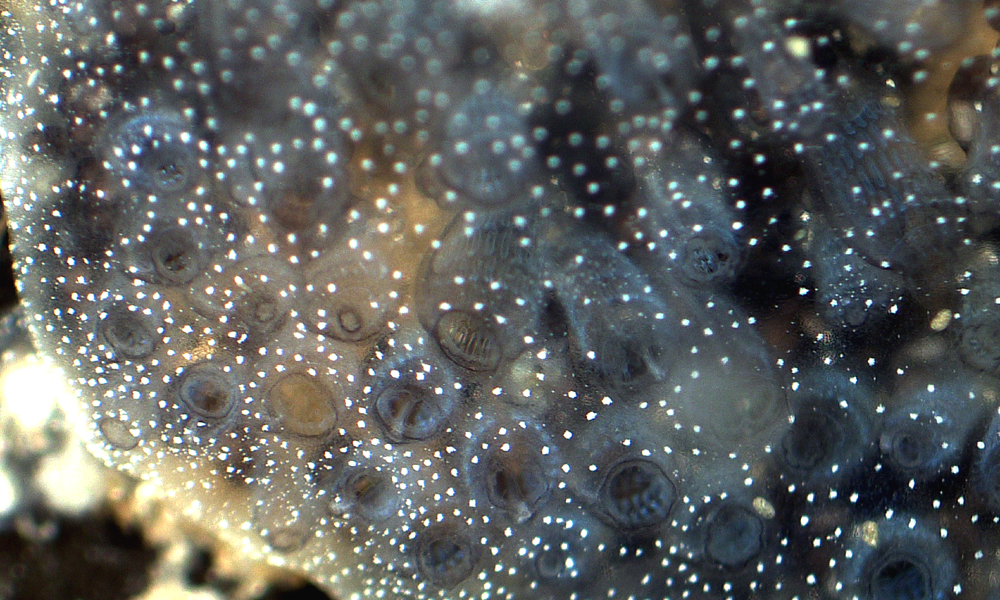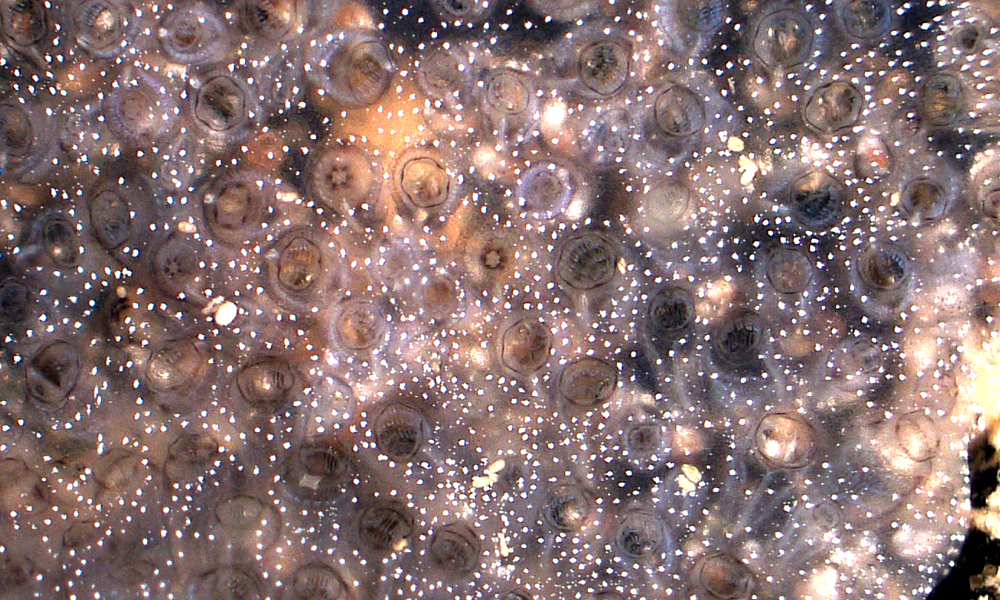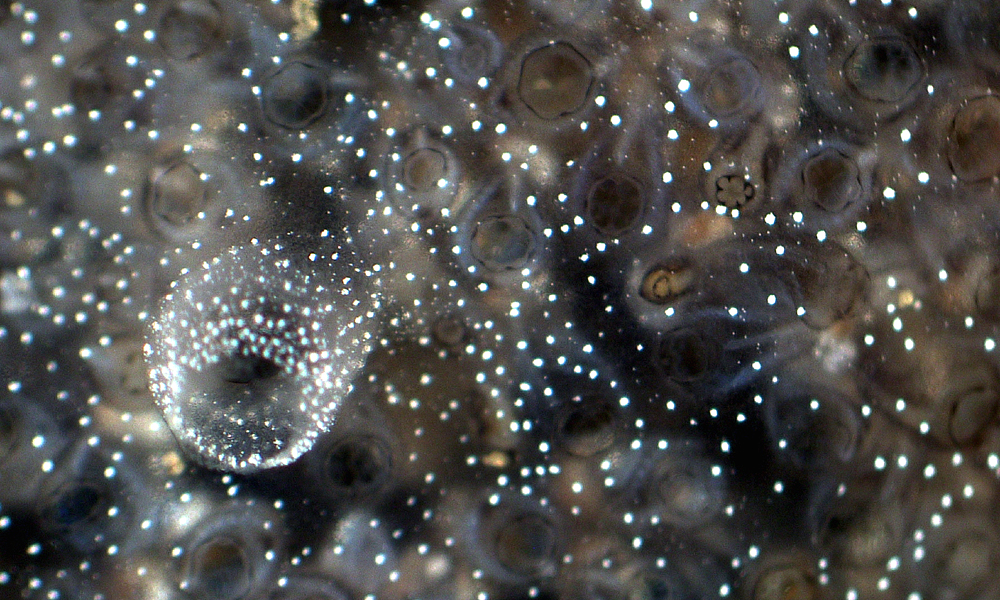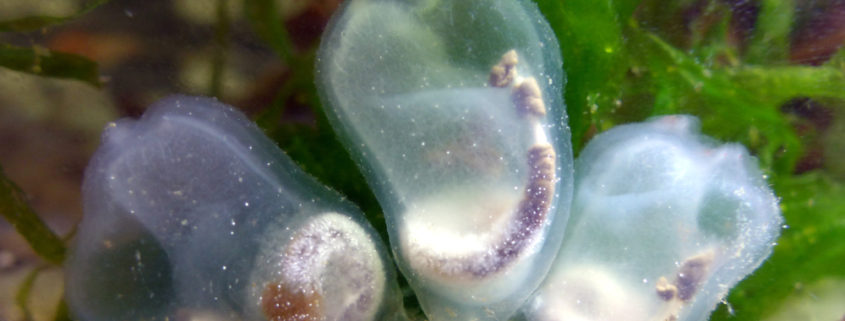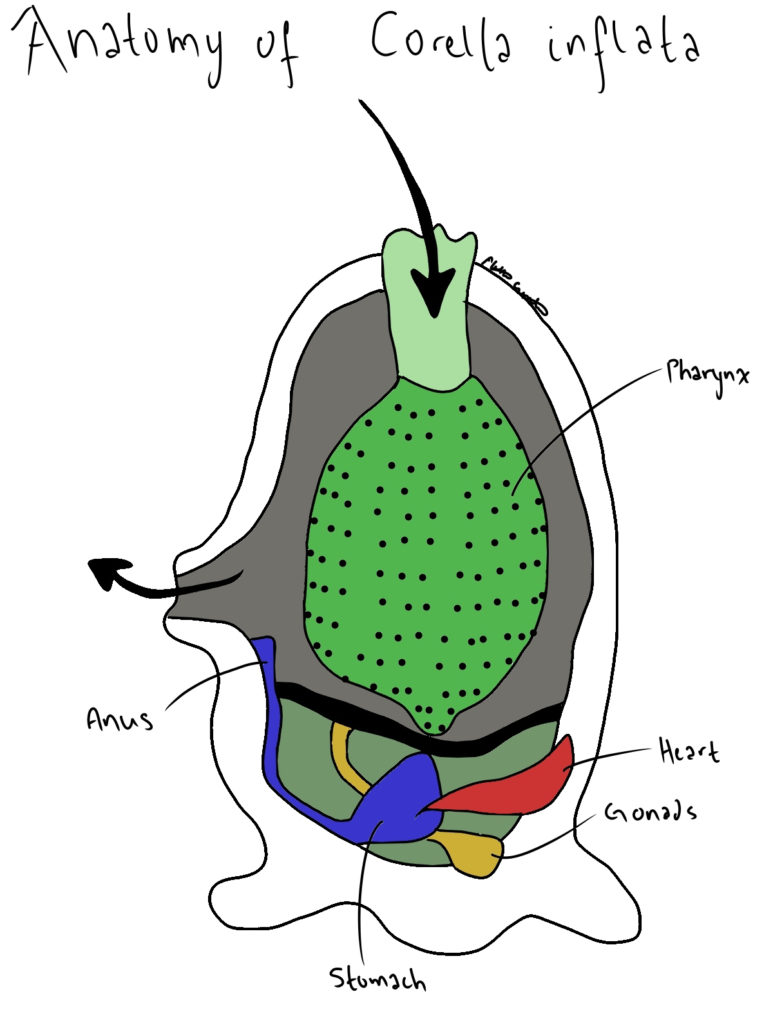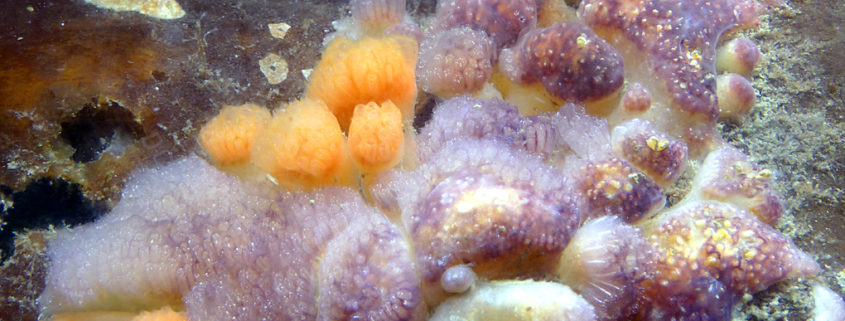Yellow Social Tunicate “Sea Grapes”
Authors: Anouk and Calen
Illustrations: by Sasha
Scientific name: Perophora annectens
Size: Up to 6mm tall and 2-3 mm wide.
Habitat: Intertidal zone, 30m (100 ft). Found in southern Alaska to southern California.
Identifying features: Small round yellow shaped body. Look like yellow, elongated grapes.
The Yellow Social Tunicate is very accurately named because they are very rarely seen on their own. These small organisms prefer to grow attached by a thin thread-like tissue called stolon. A single Yellow Social Tunicate can grow up to 0.6 centimetres in height and 2-3 millimetres wide. They are found up to 30 metres deep in the intertidal zone. They grow most commonly from southern Alaska to southern California. Tunicates are hermaphrodites meaning they do not self fertilize and there are not separate sexes. They reproduce by sexual or asexual (budding) means.They are often referred to as “Sea Grapes” because of their colour and shape.
References
Fretwell, K., & Starzomski, B. (2014). Sea grapes • Perophora annectens. Retrieved November 7, 2018, from https://www.centralcoastbiodiversity.org/sea-grapes-bull-perophora-annectens.html
Ghiselin, M. T. (2014, March 27). Tunicate. Retrieved November 9, 2018, from https://www.britannica.com/animal/tunicate
Lamb, A., & Hanby, B. P. (2005). Marine Life of the Pacific Northwest. Madeira Park, BC: Harbour Publishing.


